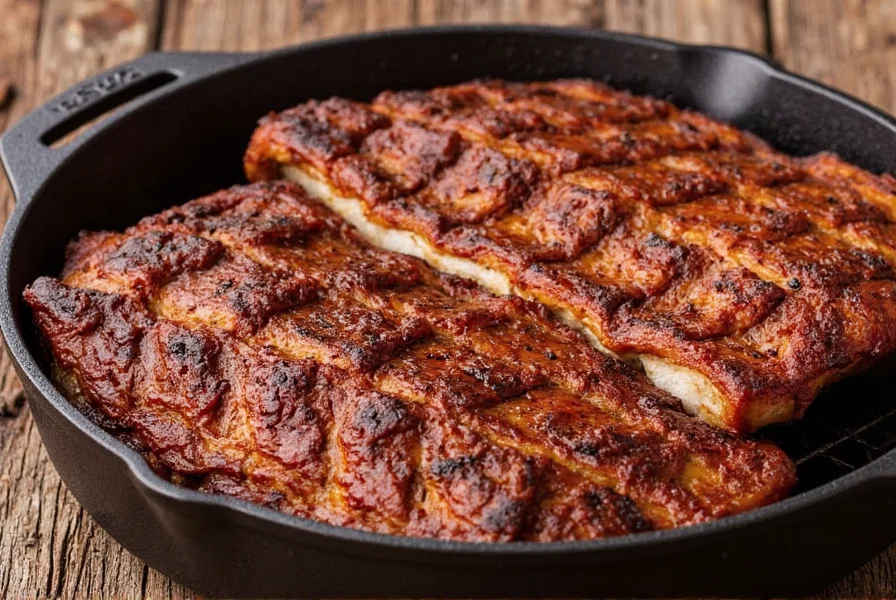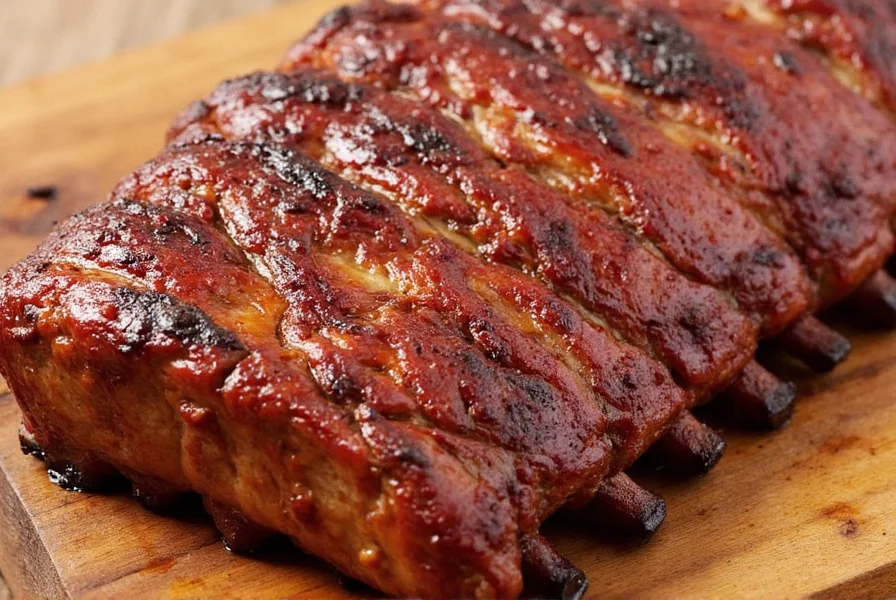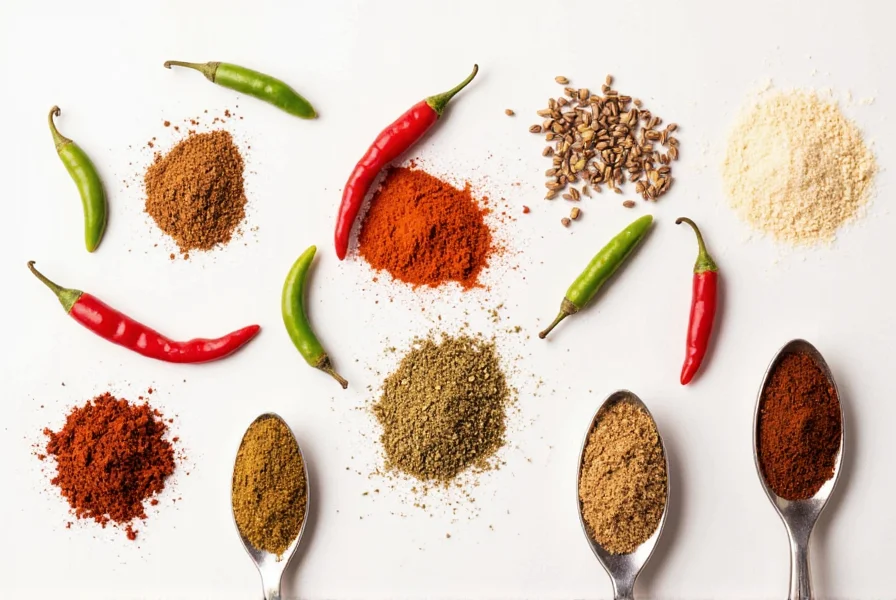The ideal resting time for ribs is 10 to 20 minutes. Resting is crucial for juicy, tender meat, and skipping this step can lead to dry, flavorless ribs. In this article, we'll explain why resting matters, the exact times for different rib types, and pro tips to perfect your BBQ every time.
Table of Contents
- Why Resting Ribs Matters
- How Long Should You Let Ribs Rest?
- Best Methods for Resting Ribs
- Spice Hacks That Work Best Post-Rest
- Buying Guide: Tools to Perfect Your Rib Game
- Frequently Asked Questions
- Final Thoughts on Resting Ribs Like a Pro
Why Resting Ribs Matters
You might be wondering, "Can't I just dig in right after pulling them off the grill?" Well, not if you want tender, juicy ribs. Here's what happens when you cook meat like ribs:
- Juices move toward the center of the meat during cooking.
- Cutting immediately causes those juices to run out onto the cutting board (or worse, the counter!).
- Resting allows the muscle fibers to relax, redistributing the juices throughout the meat.

Without this step, you're literally losing flavor and moisture. Think of it like letting a steak rest — same principle, different cut.
How Long Should You Let Ribs Rest?
| Type of Ribs | Recommended Rest Time | Notes |
|---|---|---|
| St. Louis Style Ribs | 15–20 min | Denser cut, needs longer to redistribute juices |
| Back Ribs | 10–15 min | Leaner and more tender, shorter rest needed |
| Spare Ribs | 15–20 min | Fattier, benefits from a longer cool-down |
| Baby Back Ribs | 10–15 min | Smaller and quicker to stabilize |
Of course, time isn't the only factor — ambient temperature, wrapping methods, and even how hot they were coming off the smoker all play a role.
Best Methods for Resting Ribs
There are a few ways to rest your ribs properly — each with its own pros and cons. Here's how to do it right:
Method 1: Aluminum Foil + Towel Wrap
- Wrap the ribs tightly in foil
- Place in a clean kitchen towel
- Let sit in a warm place (like an insulated cooler or oven turned off but still warm)
This method traps heat and moisture, allowing for slow carry-over cooking while keeping everything juicy.
Method 2: Resting Rack Setup
- Place ribs vertically on a wire cooling rack
- Set rack over a tray to catch any drips
- Loosely cover with foil
This is ideal if you want to maintain crispy bark without steaming it off. Great for competition-style ribs.
Method 3: Quick Rest (for Impatient BBQers)
- Unwrap ribs
- Set on cutting board
- Let sit uncovered for 5–7 minutes
Not perfect, but better than slicing immediately. Works in a pinch, especially for indoor grilling.
Spice Hacks That Work Best Post-Rest
You've rested your ribs — now it's time to finish them off with some flair. Did you know that seasoning post-rest can enhance both flavor and texture?
Brush & Season Technique
Before serving, brush ribs with a light coating of apple cider vinegar or a thin mop sauce, then sprinkle on a finishing rub.
This helps rehydrate the surface and activates the spices, giving your taste buds a punch of flavor without overpowering the meat itself.
Hot Oil Infusion
Pour a small amount of warmed oil infused with crushed red pepper, garlic, or smoked paprika over the ribs before serving.
- Enhances aroma
- Adds complexity
- Brings warmth and depth to the flavor profile
Buying Guide: Tools to Perfect Your Rib Game
If you're serious about perfecting your rib game, here are some must-have tools and accessories that make the process easier and more enjoyable.
1. Meat Thermometer – Thermapen Mk4
- Use Case: Ensures perfect doneness before resting
- Target Audience: Serious backyard cooks and BBQ enthusiasts
- Advantages: Fast read time, accurate, durable
- Occasion: Ideal for competitions or hosting events
2. Insulated Cooler Bag

- Use Case: Keeps ribs warm during rest period
- Target Audience: Grillers who smoke for hours
- Advantages: Maintains optimal resting temp, portable
- Occasion: Tailgates, outdoor parties, camping trips
3. Wire Cooling Rack
- Use Case: Elevates ribs for even airflow
- Target Audience: Competitive BBQ chefs
- Advantages: Preserves bark integrity, prevents sogginess
- Occasion: Competitions, photo-worthy meals
4. Spice Grinder – CoffeeTEC Manual Mill

- Use Case: Grinds whole spices fresh for custom rubs
- Target Audience: Home cooks and spice lovers
- Advantages: Adjustable grind settings, compact design
- Occasion: Daily cooking, weekend grilling
Frequently Asked Questions
Q: How long should I let ribs rest before cutting?
A: The ideal resting time for ribs is between 10-20 minutes. The exact time depends on the type of ribs: St. Louis style and spare ribs need 15-20 minutes, while back ribs and baby back ribs require 10-15 minutes. Resting allows the juices to redistribute throughout the meat, resulting in more tender and flavorful ribs.
Q: Can I rest ribs for too long?
A: Yes, if left uncovered for over 30 minutes, ribs can cool down too much, making the bark soggy and causing the meat to lose optimal serving temperature. Always keep them covered and in a warm spot during the resting period.
Q: What if I need to rest for longer than 20 minutes?
A: No problem — place the wrapped ribs in a preheated cooler or an oven set to 150°F. This maintains warmth without continuing the cooking process, which is helpful if you're coordinating multiple dishes for a meal.
Q: Do I have to wrap ribs when resting?
A: Wrapping is highly recommended, especially in colder environments. It helps retain both heat and moisture. Aluminum foil with a kitchen towel wrap is ideal for maximum juice retention, while a loose foil cover over a cooling rack preserves crispy bark.
Q: How do I know when ribs are properly rested?
A: Properly rested ribs will feel slightly firm but still yielding when pressed. The internal temperature should have dropped about 5-10 degrees from the cooking temperature. When you cut into them, the juices should be distributed throughout rather than pooling on the cutting board.
Q: What happens if I don't rest ribs before cutting?
A: Cutting into ribs immediately after cooking causes the juices to run out onto the cutting board rather than being redistributed throughout the meat. This results in drier, less flavorful ribs with inconsistent texture from one bite to the next.
Q: Does the resting time differ between smoked and grilled ribs?
A: Yes, smoked ribs typically benefit from the full 15-20 minute rest since they've been cooked at lower temperatures for longer periods. Grilled ribs cooked at higher heat may only need 10-15 minutes as the cooking process is more intense but shorter.
Final Thoughts on Resting Ribs Like a Pro
Mastering the art of resting ribs is the final piece of the puzzle in achieving restaurant-quality BBQ at home. Whether you're smoking a full rack of spare ribs or grilling up baby backs for a quick dinner, taking those extra 10–20 minutes to let them rest will elevate your results dramatically.
Combine that with the right spice techniques and tools, and you're not just making ribs — you're creating moments. So next time, don't rush. Let those ribs breathe, soak in their flavors, and reward yourself with every juicy, tender bite.
Now go impress your friends, family, or even your inner critic — with perfectly rested ribs, you've got nothing to worry about.










 浙公网安备
33010002000092号
浙公网安备
33010002000092号 浙B2-20120091-4
浙B2-20120091-4